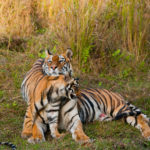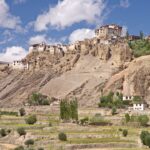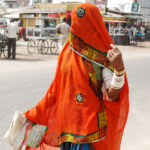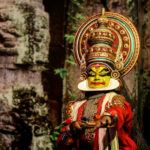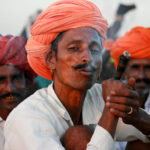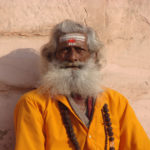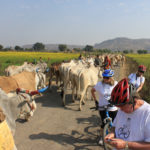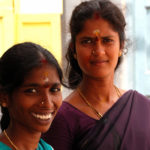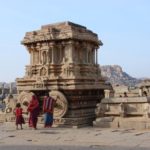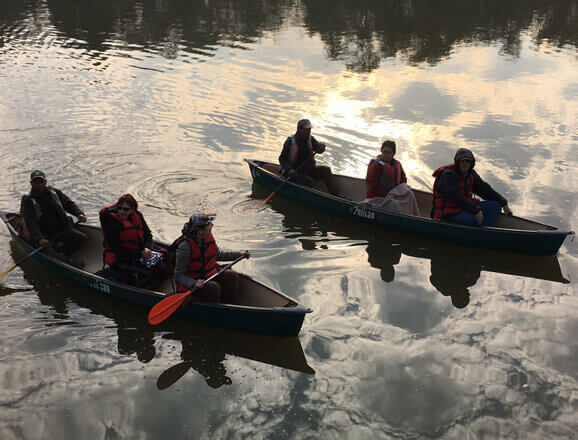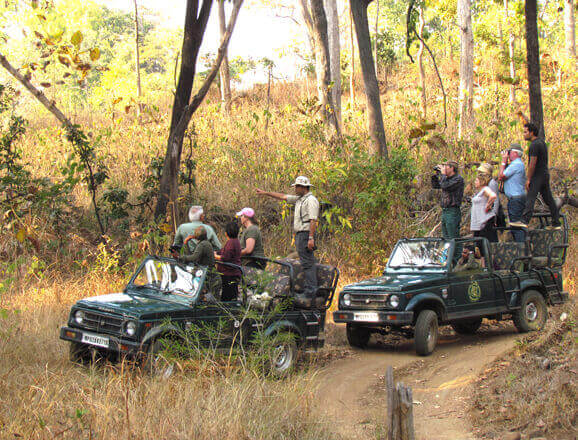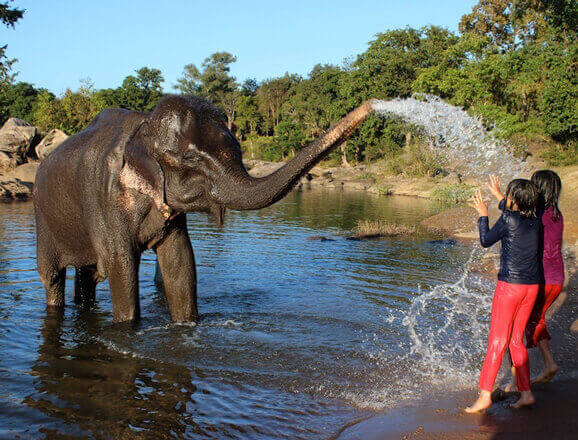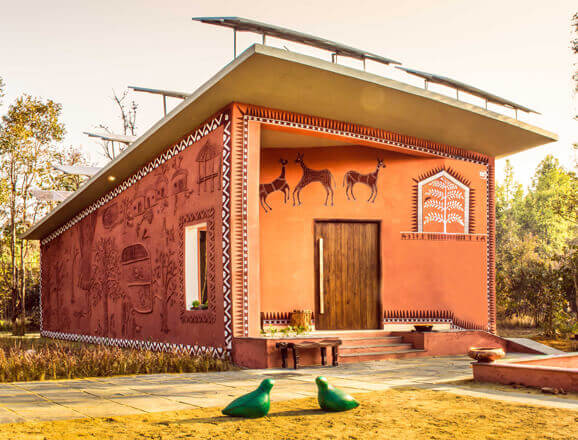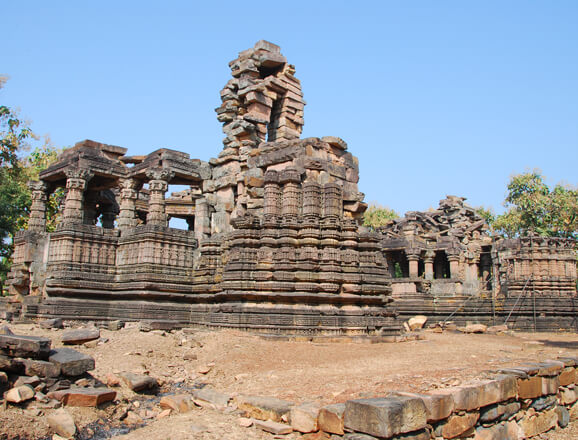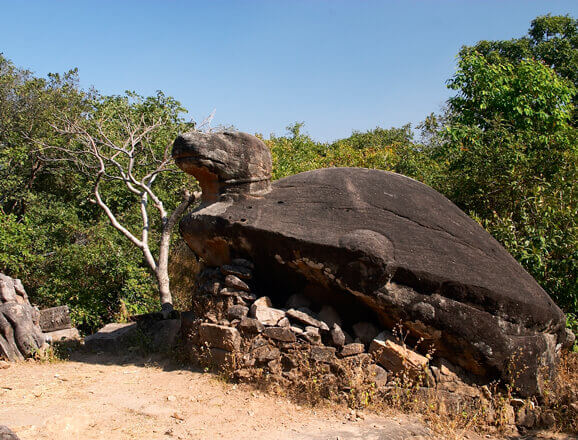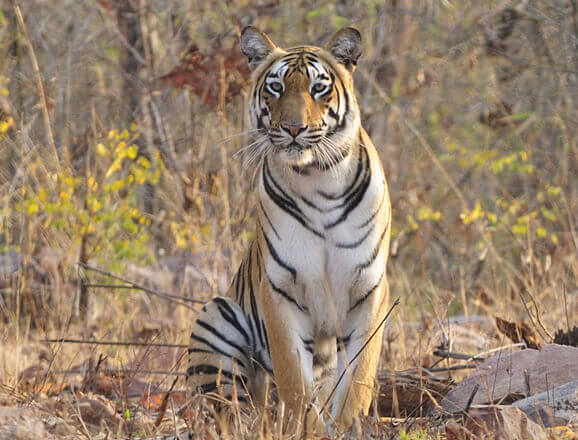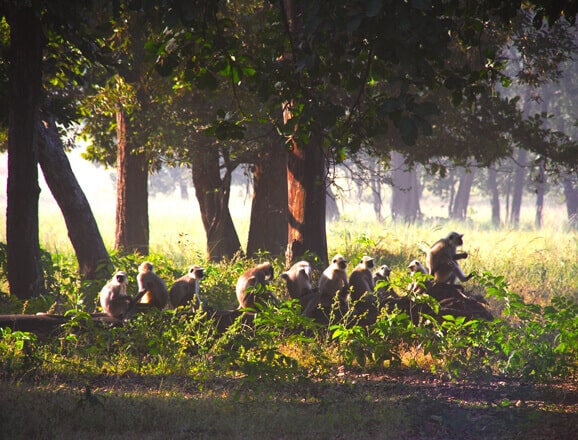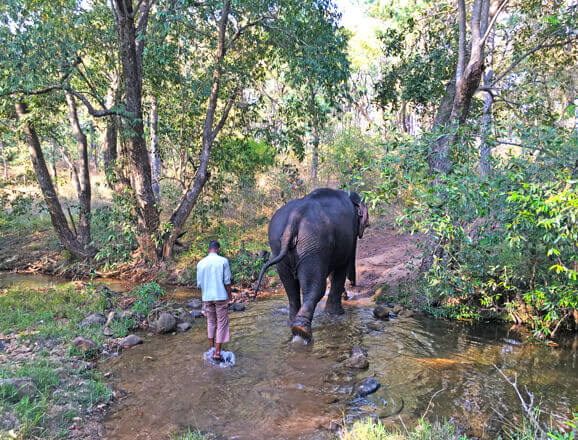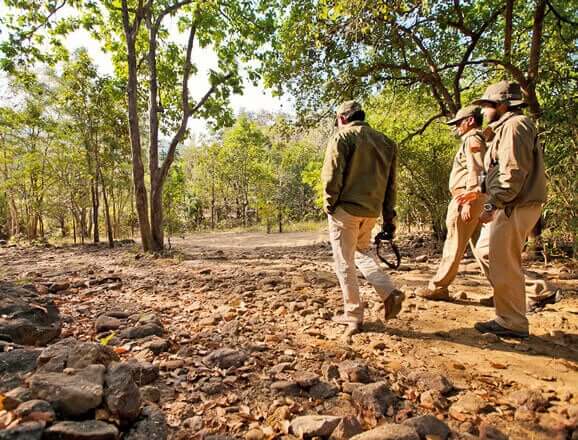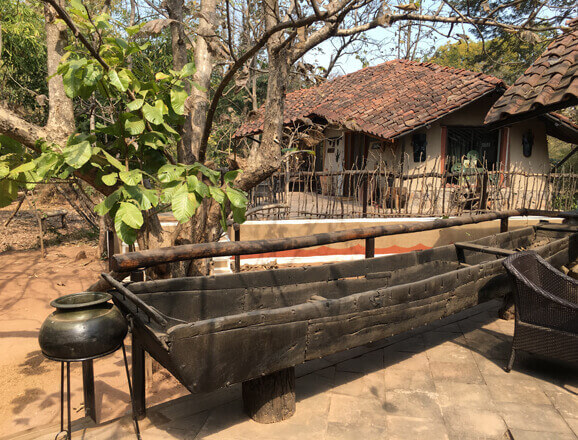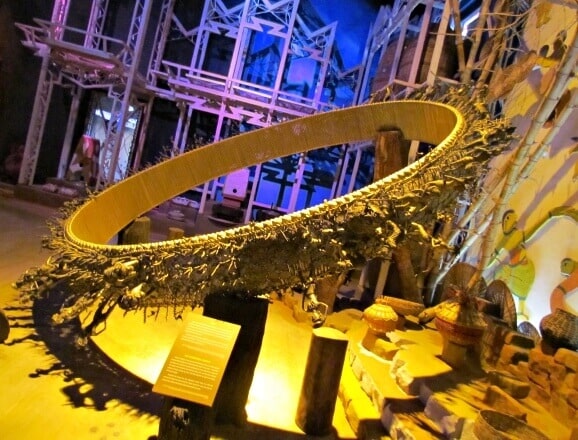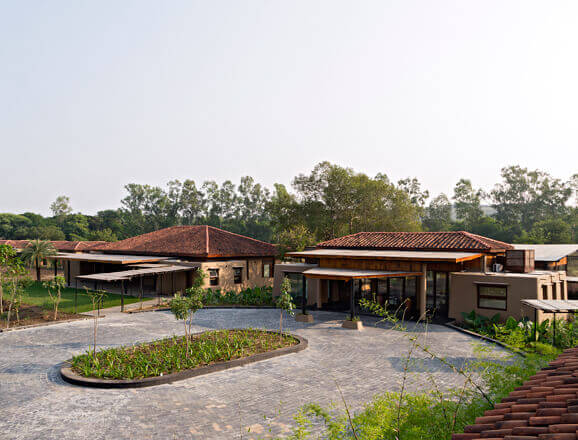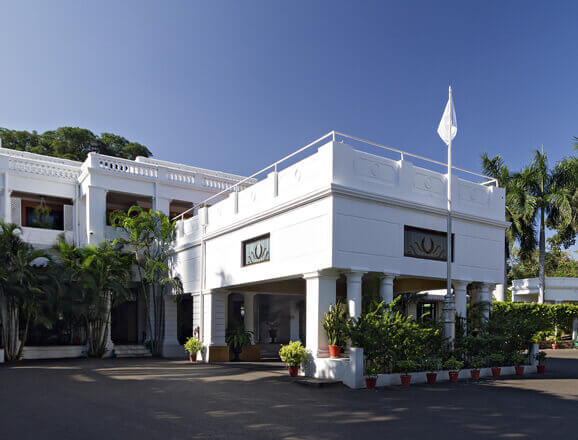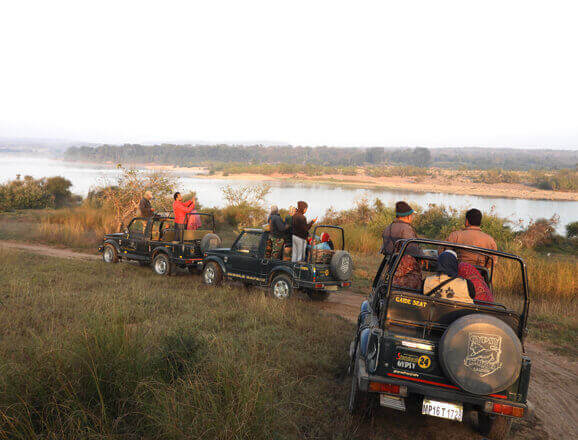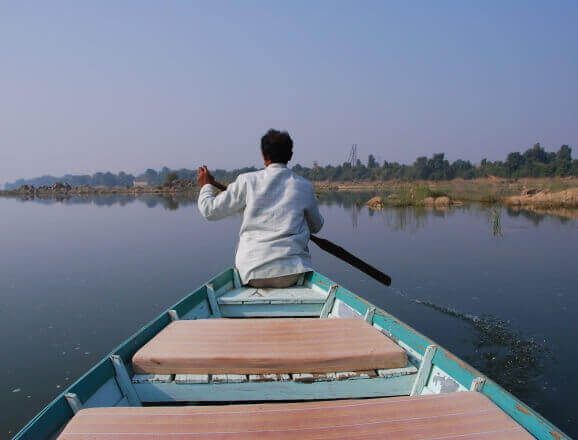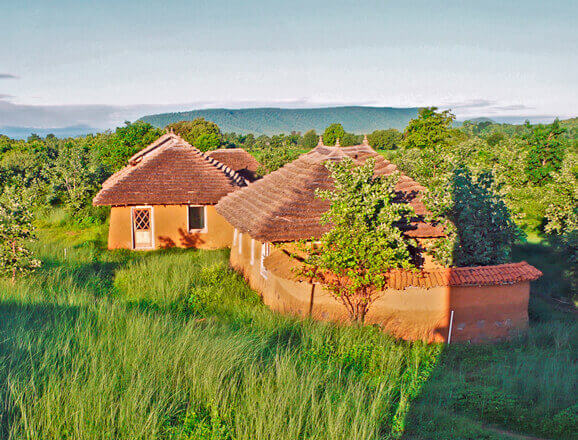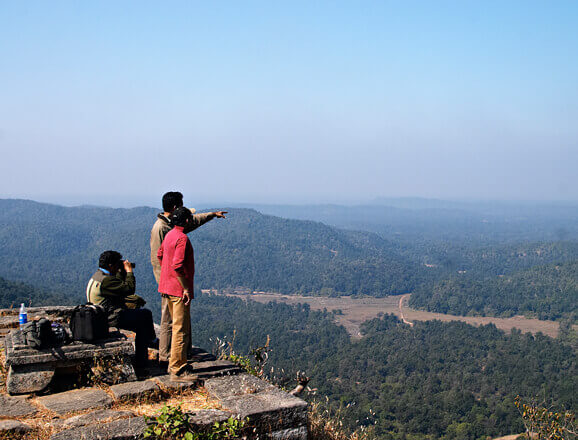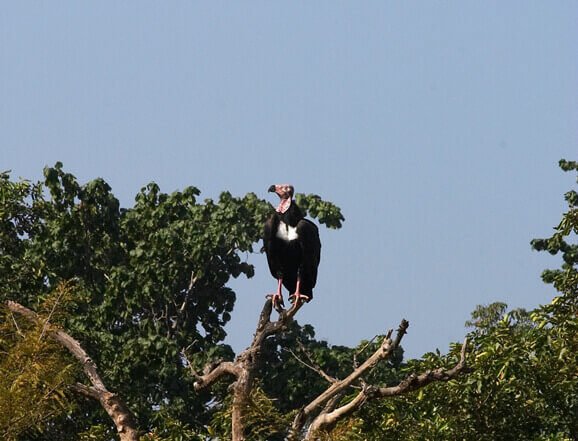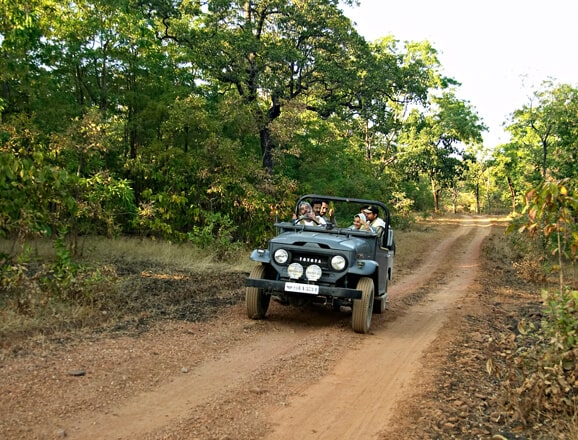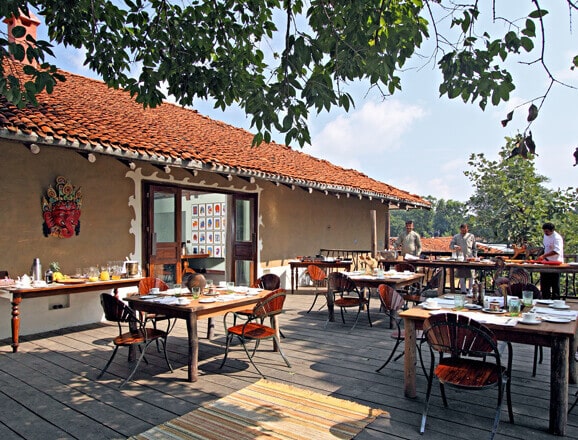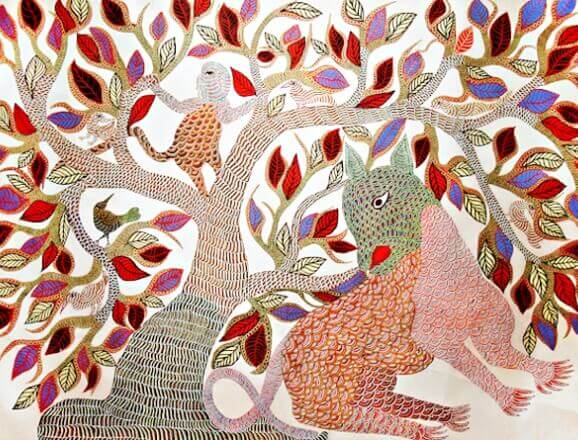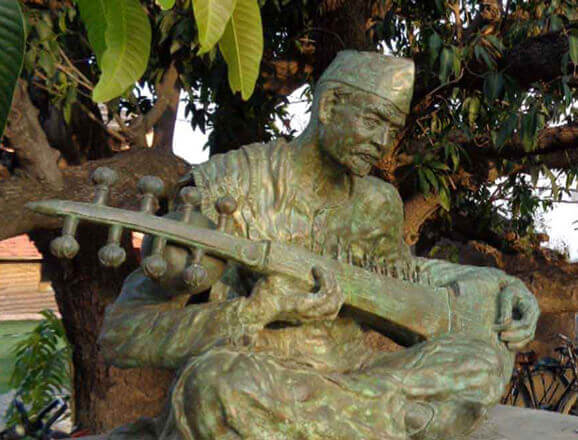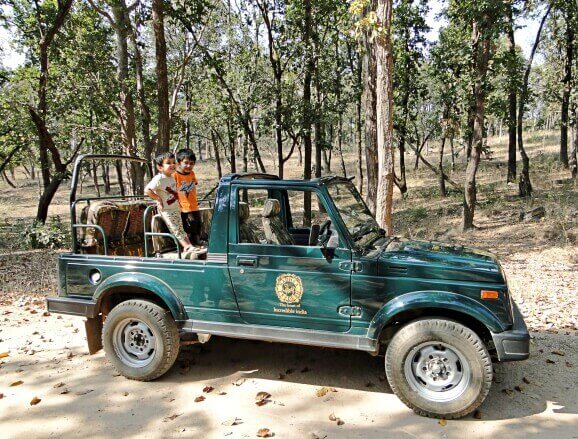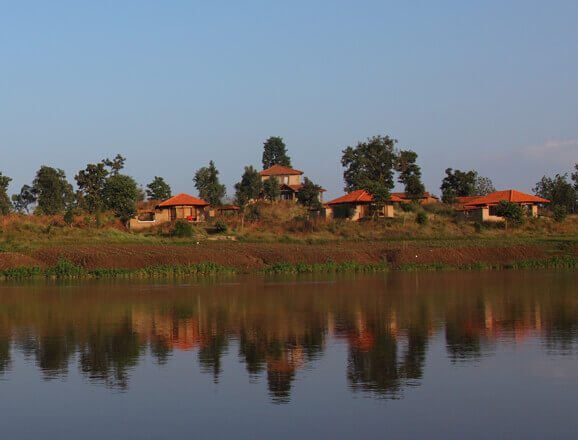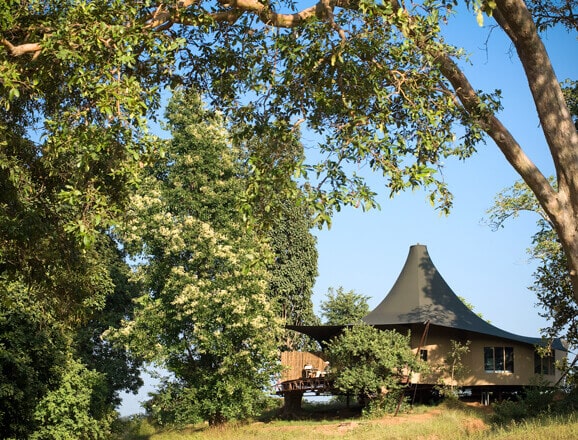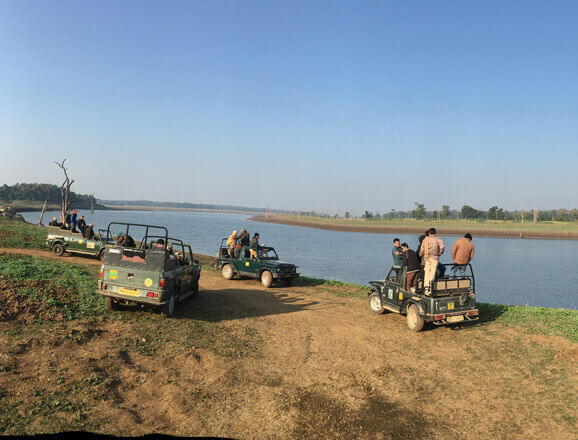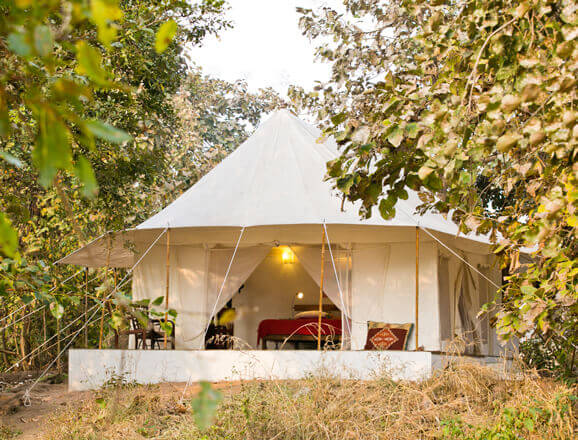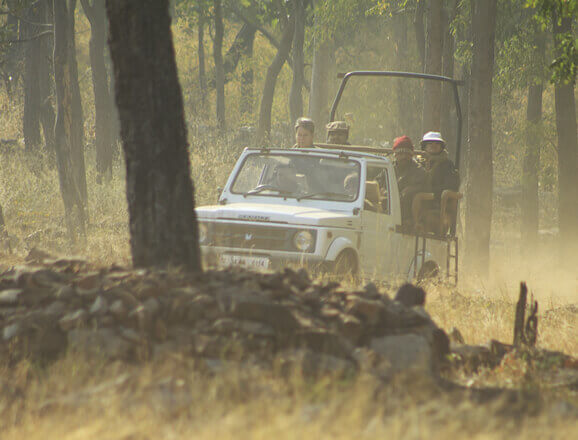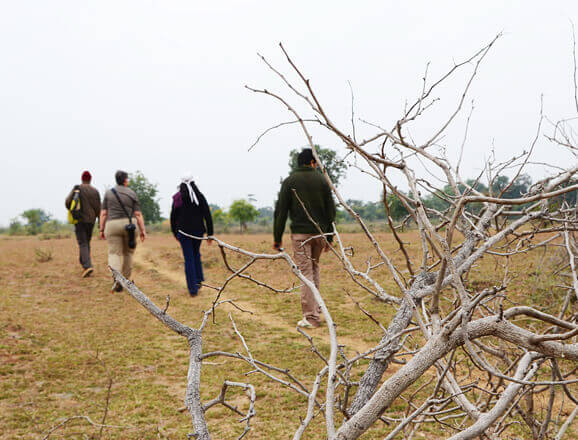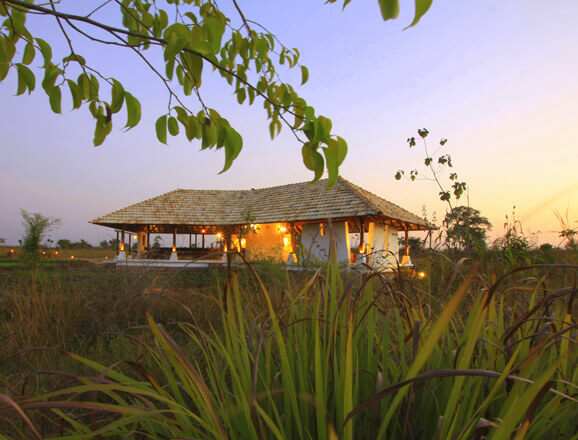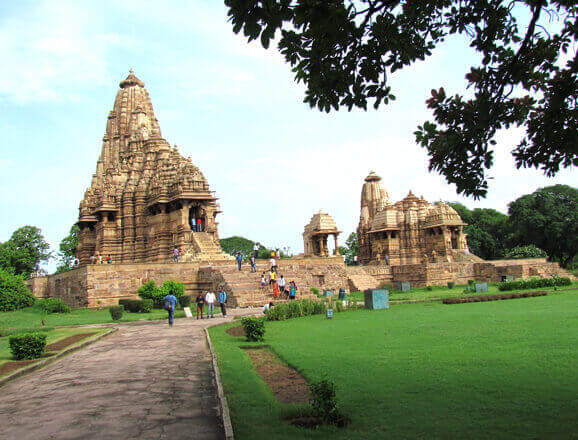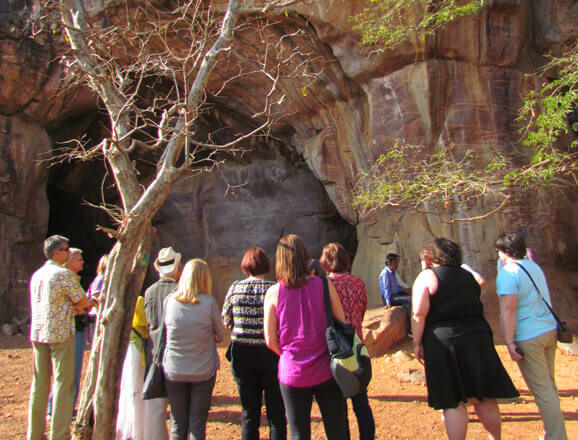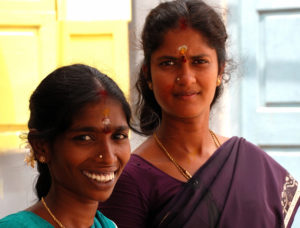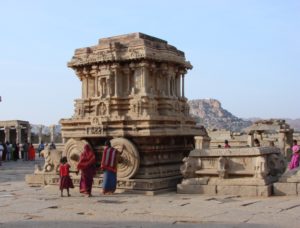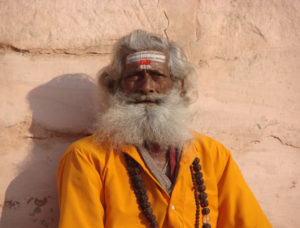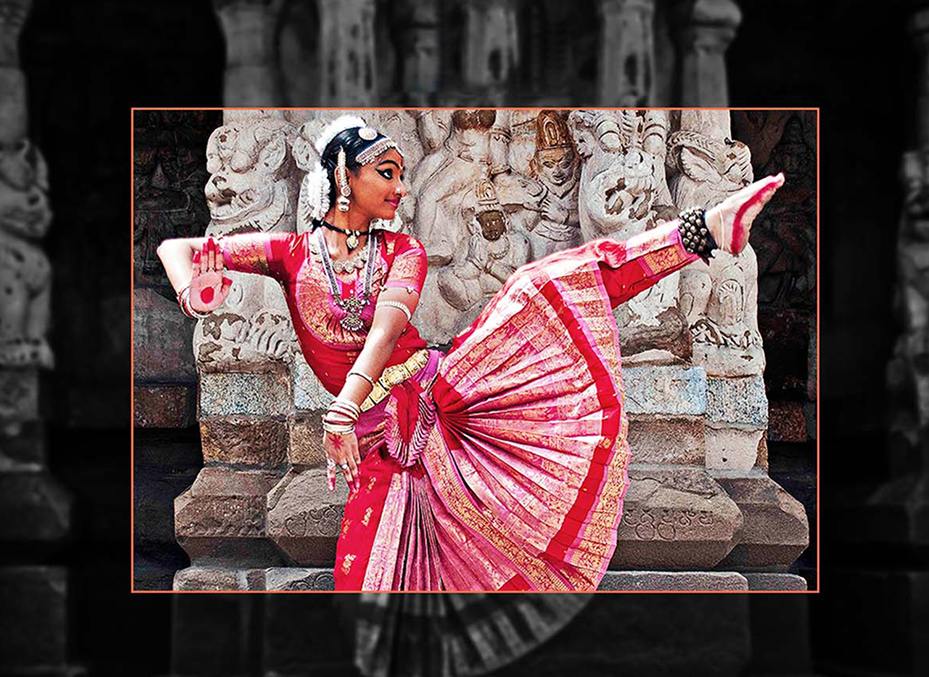Satpura
Day: 1-3
Fly from Delhi / Mumbai to Bhopal.
A four hour drive will bring you to Satpura National Park.
The Satpura National Park is a government-run initiative to protect India’s greenest corridor for biodiversity, whose zones are irrigated by the Denwa and Sone rivers. The Satpura region is named after a west-to-east running hill range that divides India into two sections: the northern river plains and the mountains, and the southern peninsula. Part of the mosaic of central Indian forests, Satpura hosts a wide variety of biodiversity and provides a refuge for species like the common leopard, the wild dogs, the Indian bison or gaur, the sloth bear, among others. The area is also a haven for bird life, with forest-dwelling and river-dependent species and a rich diversity of raptors. Nighttime also comes alive to the sound to nightjars and bats, and one can ponder over mysterious scuffles in the undergrowth under a starry velvet sky.
During your stay in Satpura, you can choose to encounter wildlife in a number of ways:
Recommended Activities
Private: Satpura Elephant Trails
Wildlife & Wilderness
To explore a wilderness on elephant back is to ride the greatest all terrain vehicle in the world. Nothing fazes an elephant, not wide rivers nor rocky escarpments. At Satpura there is no 'kettling' of tigers and no tiger show. All you get is the best seat in the jungle albeit a little bumpy, as you soar past canopies and get an elephant’s eye-view of the forestscapes.
Sloth Bear Safaris
Wildlife & Wilderness
Embark upon jeep safaris in Satpura National Park: at dawn, in the afternoon, or after dark – to see the forest in different light. The jeeps are modified to allow observation and photography, and run through carefully selected patches of the forest. Watch birdlife awaken in the wee hours of the morning, or stalk predators in the dark, jeep safaris help you cover large swathes of the forest in short periods of time, and make for fulfilling wildlife experiences. One of India's native species, for decades the sloth bear lived a grim life of dancing in the streets for people's..
Satpura Walking Safari
Wildlife & Wilderness
To truly understand the secret ways of the jungle, to appreciate the workings of its innermost recesses, to see and learn the signs and tracks that wildlife leaves through the forest and to learn to interpret these, to savour the smell, sounds and sense of wilderness you have to set off on your own two feet. Get off the vehicle tracks and strike out across the forest and allow the wild to envelop you. This is a thrill in any wild place but moreso in tiger country. So follow a reserve tracker through the wild, unkempt trails of the Satpura..
Satpura Canoe Expeditions
Active Travel & Adventure
The river Denwa flows right through the Satpura National Park, as much a lifeline of the forest as an ecosystem in and of itself. A canoe down the river allows you to paddle quietly along the shore, drifting into little inlets and bays to watch animals quench their thirst, birds hunt in the shallows or crocodiles bask in the sun. The canoe experience is for the unhurried wildlife, who would like to tap into the forest pulse at its most languid.
Recommended Accommodations
Reni Pani
Wildlife Lodges
Located in the heart of Satpura National Park, Reni Pani’s luxurious accommodation is the perfect end to days out in the wilderness. Named after the ‘reni’ tree that grows rampantly in the vicinity, Reni Pani is set in a landscape of teak forests interspersed with agricultural lands, which draw herbivores like sambhar, chital, barking deer, nilgai among others - and occasionally, their big cat predators. The property is also home to a diversity of birds and smaller creatures allowing for a round-the-clock safari experience.
Bhopal
Day: 4
On the journey back from Satpura to Bhopal, stop off en route at Bhimbetka - a site of prehistoric cave paintings. Bhimbetka, amusingly translates to ‘the seat of Bhima’, a demigod fathered by Vaayu, the wind god and is a character in the epic poem, Mahabharata. Yet it can trace human settlement way before the time of the epic poem, all the way to South Asian Stone Age 30,000 years ago, and it does so with cave rock paintings. A fascinating Paleolithic gallery that documents not just early human life (offering one of the earliest evidences of dance) but also the variety of wildlife in the region present through hunting scenes.
Drive on towards Bhopal for a day of cultural activities.
Recommended Activities
Bhopal Museum Trail
 Popular Culture
Popular Culture
A hidden gem in the city of Bhopal, the Tribal Museum is an incredibly curated collection of tribal art, folklore and livestyles. From reconstructions of village houses to a gallery of children's games - the Bhopal Tribal Museum is like Ali Baba's cave for the culturally-curious! The Tribal Museum also has a gallery dedicated to 'Childrens Games', where they document pasttimes like marbles, tree-climbing and other fun activities. The Museum of Man documents the evolution of our species, with interesting examples from India's own tribal communities - sure, to be a fascinating learning experience for all.
Recommended Accommodations
Jehan Numa Retreat
 Wellness & Spa
Wellness & Spa
Located at the edge of an urban forest, Bhopal’s well-known Van Vihar National Park, the Jehan Numa Retreat is a snug spa and retreat. From their outdoor dining space, to the organic farm, from its landscaped gardens to its delightful open air showers, Jehan Numa Retreat helps you reconnect with nature. The spacious, well-appointed rooms combined with its warm hospitality spells comfort - perfect for a relaxed vacation or a business trip.
Jehan Numa Palace
Luxury Boutique
A 19th century Palace, Jehan Numa nestled on the slopes of Shamla Hill is a superb medley of British Colonial, Italian Renaissance & Classical Greek architectural styles. The gleaming white façade has a simple yet bold style that is striking and exudes an air of timeless graciousness. In the finest tradition of Bhopal hospitality, it offers a taste of royal living, luxury and extravagance that was once enjoyed by the Nawabs.
Panna
Day: 5-6
Leave your hotel early this morning, and catch the express train from Bhopal to Khajuraho. Enjoy breakfast aboard the train, with lovely views of deep-cut ravines and snaking rivers.
Upon reaching Khajuraho, lunch at one of the hotels, before setting off the explore the famed temples. Our temple trail is an evocative way to experience history of a bygone era, with a narrative of the Chandela dynasty, the temple construction and the city’s name. Khajuraho has some of the best preserved temples in the country, with intricate stone carvings that have the finish of wood or metal and while the erotic sculptures have brought it to the attention of the world, there is a far deeper symbolism to the art.
Later, a one hour drive will bring you to Panna National Park. Check-in by late evening at your accommodation skirting the Panna National Park.
Panna is a city of tribes and sages, of rajahs and colonial loyalties, of meadows and evergreen forests, of tigers and diamonds, and could be your doorway to Central India. The lesser known Panna National Park, has seen a success of the tiger reintroduction programme, a lesson that other national parks would do well to emulate. With a good mammal population and a rich raptor activity indicating a healthy ecosystem, the park offers an offbeat experience for wildlifers looking to avoid the hassle and formalities of more popular destinations.
Explore Panna’s wildlife by jeep or boat safaris:
Recommended Activities
Panna Jeep Safari
Wildlife & Wilderness
Explore the heart of diamond and emerald country on a jeep safari. Panna's habitats include dry broadleaf to moist deciduous forest, and the catchment of the Ken river irrigates national park. With over 200 species of birds, a rich abundance of large and small mammals, like the Royal Bengal tiger, leopard, wild dogs, chinkara, spotted deer, sloth bear, and riverine reptiles like gharials and crocodiles - a jeep safari through the park throws up a lot of surprises.
Ken River Safari
Wildlife & Wilderness
The Ken river flows right through the Panna Reserve. A boat safari down the gushing Ken can help you glimpse wildlife along the lifeline of the forest and you can stake out creatures who come to the riverside for water and food. It is a rare pleasure in a forest teeming with life, and the riverways offer a more tranquil way to experience nature.
Recommended Accommodations
Sarai at Toria
Wildlife Lodges
With sweeping views of the gushing Ken River, the thatched, mud-caked cottages and the stone-paved dining areas, the Sarai at Toria is a simple but tastefully done-up property that blends into the rustic landscape at the edge of the Panna National Park. Enjoy the comforts of a stay that has little impact on the wildlife, offers rich pickings for fishermen, and is dominated by the incredible diversity of insects and birds on the riverside.
Bandhavgarh
Day: 7-9
This morning, a 5-hour drive from Panna will lead you to the Bandhavgarh forests. Bandhavgarh can also be reached from Jabalpur airport, 3 hours away. For those who'd like to connect our River Song itinerary to this one or prefer to avoid long drives, private aircrafts can also be chartered from Khajuraho or Varanasi to the Umaria airstrip near Bandhavgarh.
Cradled amidst the picturesque hills of Central India, the renowned tiger reserve of Bandhavgarh was a former hunting ground for kings. If the thick bamboo forest and dense greenery with streams, rivers and waterfalls are not enchanting enough, the 1st Century fortress ruins and the rich biodiversity make Bandhavgarh a favourite for wildlifers and photographers alike. Shutterbugs can avail of a full-day permit to optimize their time and have an uninterrupted wildlife photography experience.
There are many ways to take in Bandhavgarh’s wildlife, here are a few suggestions:
Recommended Activities
Bandhavgarh Bicycling
Active Travel & Adventure
A great way to take in the wilderness and the outdoors is by cycling. Explore the village near the lodge or the numerous dirt tracks – with a naturalist or your lodge staff member to help you to orient yourself and make the best of the trails.
Bandhavgarh Nature Walk
Wildlife & Wilderness
This one-and-a-half hour walk takes you around your lodge in search of the flora and fauna, that makes up the ecosystem of the Bandhavgarh Reserve. The focus is on birds and other lesser-known fauna like butterflies, dragonflies, reptiles, as also the commonly found trees and their uses. The Nature Trail is an interesting introduction to the biodiversity in the area and can prepare you better for the wildlife safaris to the park.
Birding in Bandhavgarh
Wildlife & Wilderness
With over 250 recorded species of birds, Bandhavgarh offers rich pickings for birdwatchers. The Bamera, Garhpuri, Majhauli, and Khitauli reservoirs with Rajbahera, Chakrdhara, Sheshsaiya, Bhitari are the best places for birding in and around Bandhavgarh forest area, as also the Magdhi and Khitauli zones. Look out for the variety of forest birds like flycatchers, babblers and warblers, water birds like herons and storks, as also the rich raptor population, notably the red necked vultures!
Bandhavgarh Jeep Safari
Wildlife & Wilderness
Explore Bandhavgarh’s 4 wildlife zones – Tala, Magdhi, Khitauli, and Panpatta on a jeep safari. The key wildlife to look out for while visiting is: the royal Bengal tiger, common leopard,
caracal, and if you’re lucky, the rare Indian Wolf, as also rich birdlife.
Recommended Accommodations
Samode Safari Lodge
Wildlife Lodges
This divine getaway is designed around a series of individual safari lodges. Though inspired by South Africa, the decor and setting is Indian and the ambience magnificent and hospitable - unmistakably Samode. The Samode Safari Lodge is an extravagant wilderness experience of luxury and unusual sophistication.
Kanha
Day: 10-12
A four hours’ drive from Bandhavgarh will take you to Kanha, one of India’s most popular wildlife destinations. Kanha can also be accessed from Jabalpur airport after a 3-hour drive or from the Nagpur airport with a 5-hour drive. You could also charter an aircraft from Jabalpur or Nagpur to the Baihar airstrip near Kanha, to shorten the journey and enjoy aerial views of the lush forests that inspired Rudyard Kipling.
Kanha's vast grassland-and-forest ecosystem plays host to a bewildering diversity of wildlife. From the raptor populations of its Bamhnidadar plateau, to the tigers, jackals and wild pigs that roam its open meadows, to its more elusive creatures that frequent the Sondar and Babathenga tanks - Kanha offers an exclusive wildlife experience.
Kanha National Park was one of the first areas in India to fall under the Project Tiger conservation program to save the Royal Bengal Tiger. Kanha boasts abundant mammal populations and diverse bird life, and it offers sanctuary for the endangered barasingha (12-horned) deer, the black buck, the lesser florican among others. The presence of the barasingha, or the hard ground swamp deer (Branderi barasingha) in Kanha is largely due to the research of George Schaller, the author of “The Deer and the Tiger”, written in 1967 that highlighted the plight of the species. This led to a first-of-its-kind stockade breeding of the barasingha within the national park boundary, with populations bounding back in 1972-73.
For serious photographers, full-day jeep permit is available - for an intimate wildlife photographing excursion.
Over your 3-day stay in Kanha, tap into the forest’s pulse with our recommended activities:
Recommended Activities
Kanha Museum of Life & Art
 Arts, Crafts & Textiles
Arts, Crafts & Textiles
Located within the premises of the Singinawa Jungle Lodge is the Kanha Museum of Life and Art. The Museum showcases Gond and Baiga traditional paintings, that draw inspiration from the forests and wildlife around. The gallery hopes to provide a visual tapestry of tribal art, with its intricate detail and deeper significance. One of India's most populous aboriginal tribes, the Gonds, are also one of the oldest, distinguished by their tattoos. The Gonds have long inhabited the stretches of Central India, where geological strata dating back to the fragmentation of the supercontinent Pangaea was discovered. The name ‘Gondwana’ was coined..
Kanha Bicycle Adventures
Active Travel & Adventure
For the adventurous, explore the buffer zones of Kanha in and around your lodges on cycle. Cycling through the wilderness would give you ample time to stop and examine the little details – from evidence of wildlife, and perhaps can also help you track and sight creatures that you might otherwise have missed. (Available at the Kanha Earth Lodge only)
Excursion to Maihar
 Arts, Crafts & Textiles
Arts, Crafts & Textiles
For the artsy, an excursion to Maihar – Central India’s secret retreat for the artist community, could be interesting. A heritage residency and India’s first open-air studio for art installations in stone, metal, wood, clay and fiberglass – the Art Ichol in Maihar serves as a creative escape for a budding population of artists who are veering away from mainstream careers. As with all art, the numerous scattered works left behind by students as reminders of their sojourn here, represent an eclectic mix of art styles – traditional with modern influences, age-old techniques with contemporary refinements. Image credits: www.artichol.com
Junior Rangers’ Programme
Wildlife & Wilderness
For those traveling with children, perhaps the best possible way to not just experience the Kanha National Park but to actually understand it would be to enroll for the 3-day Junior Rangers’ Programme. The Junior Rangers’ Programme is a jungle-craft course that will impart the basics of using field equipment, identifying species, and recording them via notes and photographs to help foster enthusiasm and knowledge in young naturalists. A 2-hour session each day, between safaris and a 30-40 minute session in the evening, will help hone a set of skills that will prepare them for wildlife watching and survival. Image..
Recommended Accommodations
Flame of the Forest
Wildlife Lodges
Situated close to Khatia / Kisli Gate, the entry points to the Kanha reserve, this is a dream haven for nature enthusiasts with a gracious touch of style. The central guest area is a lofty, elegant space highlighted with artwork of upcoming Indian artists. In the night, the sky is covered with stars and all of them seem to be just a touch away! As your eyes are watching the stars your breath will be taken away by the calls of the nocturnal animals around the Lodge.
Banjaar Tola
Wildlife Lodges
Overlooking the heart of the Kanha National Park, the luxurious, yet lightweight, ensuite tents have been designed in a contemporary style, with pressed bamboo wall panels, gorgeous bamboo floors and locally crafted furniture hewn from the timber of exotic Indian trees. The textiles have been designed in tones of delicate saffron and acid-washed green, with rich block-printed Madhya Pradesh cottons and silks.
Kipling Camp
Wildlife Lodges
Kipling Camp is one of the finest wildlife camps in the country, where attention is paid to every little detail; over 90% of the workforce is locally sourced, well-trained, award-winning naturalists accompany you along every trail so that you can truly understand the wildlife and the habitat, and an accommodation that strikes a balance between wilderness and luxury – to ensure that you carry back great memories of your Indian wildlife experience.
Pench
Day: 13-14
After breakfast, a 4-5 hour drive away from Kanha is the Pench National Park. Pench can also be accessed from Nagpur, with a 5 hours drive.
Named after a river that flows through the region, the Pench district hosts one among many patches of Central India’s forests – and the Pench National Park is a corridor for wildlife across this diverse habitat of forest and grassland. The rich biodiversity of the area had been recorded in an ancient official document of the emperor Akbar, a Mughal ruler and the park continues to support large populations of herbivores, creating a favourable environment for carnivores – the most-sought after being the Royal Bengal Tiger. Forming a continuum with the Kanha forest, Rudyard Kipling’s Jungle Book is often attributed to this jungle as well. Upon arrival, check in at your hotel, meet your naturalist and plan your safaris ahead. At Pench, a full-day photography permit can be availed to make the most of your jeep safari into the park:
Recommended Activities
Pench Jeep Safari
Wildlife & Wilderness
Jeep safaris through Pench National Park will cover the 3 different zones of the Pench National Park: Jamtara Gate, Turia Gate, and Karmajhiri Gate. The key wildlife to look out for while visiting the Pench National Park is: leopard, the royal Bengal tiger,
dhole / wild dog, chausingha or the four horned antelope, Russell's viper
and four species of vultures: white rumped vulture, long billed vulture, king vulture and the Egyptian vulture, among others.
Recommended Accommodations
Jamtara Wilderness Camp
Wildlife Lodges
At the Pench National park’s northern periphery lies the Jamtara Wilderness Camp, so named after a nearby village. The Jamtara Wilderness Camp is a luxury tented camp that strives to provide the perfect balance between a rustic, wilderness experience and a comfortable stay. Jamtara Wilderness Camp can also organize additional activities like a walk to the Jamtara village, where you can interact with the farmers and explore the farmlands of corn and sugarcane, and perhaps even see how the local jaggery is made. Or with a cooking demo, to get a glimpse into the rustic cuisine, followed by a hearty..
Nagpur
Day: 15
A three to four hour drive from Pench National Park, will bring you to Nagpur, the city of oranges - your overnight halt. Located at the heart of India, Nagpur vies for a role in connecting the country’s road and railway networks and thereby its inland trade routes. With a zero milestone landmark in the city, Nagpur was used as a central point for all colonial period measurements of distances across the subcontinent. As a metropolitan in a state that has vested its capital in the city of Mumbai, Nagpur has struggled to define its own identity; people speak Hindi rather than the regional Marathi, an industrial hub has emerged in an area largely dependent on agriculture, and is the arid gateway to the wildlife parks of Central India.
Tadoba
Day: 16-17
Early morning, head south from Nagpur and a two-hour drive will bring you to Tadoba-Andhari National Park. Nagpur also has an airport, with connections to Mumbai - and this could be the starting point of a wildlife itinerary as well.
Named after a deity of local tribes, Tadoba and the Andhari river, the Tadoba-Andhari forest forms an important link between the Central India forests and those across the peninsula. Tadoba’s watering holes include the river and a lake - and during the severe summers in the region, are the lifelines for biodiversity. Tadoba’s checkered landscape of hills and meadows, cliffs and caves, dense forests and tribal villages offers refuge for a diversity of species. However, with the proximity of the tribal villages to the forests, Tadoba is also the stage for numerous man-wildlife conflicts - and offers an interesting insight into the lives on the periphery of wildlife reserves.
Recommended Activities
Tadoba Jeep Safari
Wildlife & Wilderness
Discover the dry deciduous landscape and the rich wildlife of Tadoba National Park by jeep. Along the safari, look out for the royal Bengal tiger, dhole / wild dog
, leopard
, chausingha or the four horned antelope,
grey headed fish eagle
, oriental honey buzzard
, mottled wood owl, marsh crocodile (they used to breed crocodiles in the park at one time, however, this does not happen any more),
stripped hyena, among others. Image credits: Savasara Jungle Lodge
Tadoba Trails
Wildlife & Wilderness
A nature walk takes you along the edge of the Tadoba park and is quite spectacular and informative. These walks typically cover the basic ecology of the park, the geographical lay of the land, animal behaviour
and reading animal tracks. They also include interesting facts that highlight the importance of the smaller, lesser-known fauna. They also have some interesting and quirky stories from the past of the royalty of the area that makes the outing all the more interesting and fun.
Recommended Accommodations
Svasara Jungle Lodge
Wildlife Lodges
Svasara Jungle Lodge, the premier luxury destination at Tadoba-Andhari Tiger Reserve is located close to the Tadoba's Kolara gate. Local inspiration has suffused everything - from their outdoor pavilion inspired by the Maratha emperors who once held sway in the region, to their spa with orange-based treatments making use of the most widely cultivated local fruit, and their Maharashtrian cuisine. Svasara’s eco-conscious principles are evident with some structures constructed from old dismantled buildings, and a swimming pool that doesn’t need to be constantly refilled. A butterfly garden, an open-air cinema hall and acres of property means there’s plenty to do..
Nagpur
Day: 18
Drive back to Nagpur airport for your homeward bound flight.













